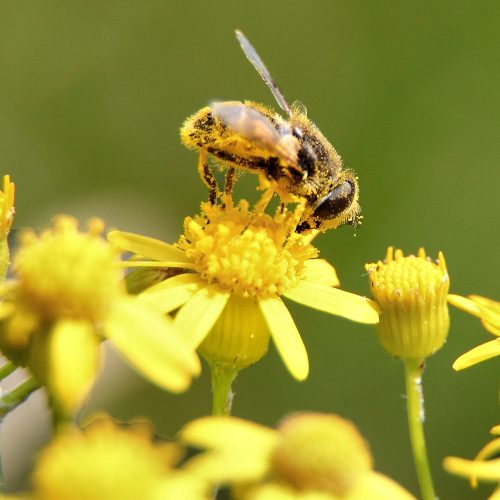These are some of the best trees to plant near sidewalks. All of the trees compiled in this list do not typically grow large surface roots, so they can easily be planted in an urban environment, where green spaces are often constricted by asphalt or cement.
These trees are also known for being resistant to serious pests and diseases. They have at least moderate drought tolerance as well as salty soil tolerance, and were selected based on their general messiness (i.e. amount of sap and fruit). These trees are not prone to branch breakage (a good way to avoid constant tree-related insurance claims on your car), and all either have a pleasant smell or no smell at all.
Rare and hard to find trees were excluded, so it should be easy to find these trees at a store like Home Depot or a local nursery.
Get started on your home garden with this step-by-step guide to DIY Metal Raised Garden Beds! Not ready to start that garden just yet? Then add some color and beauty to your small backyard with these great ‘compact’ trees.
Table of Contents
Baldcypress
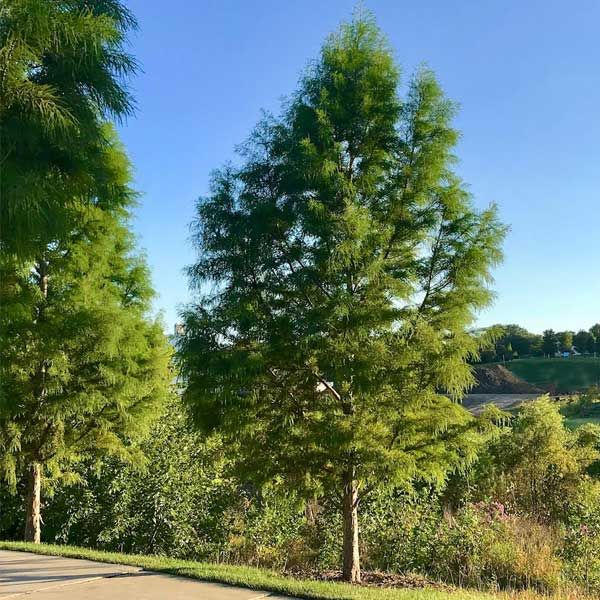
The Baldcypress, state tree of Louisiana, eventually develops into a broad-topped, open specimen when mature. Capable of reaching 100 to 150 feet in height, this suburban tree is unique in that most trees with this open a form are usually much younger and shorter.
Its pale-green, needle-like leaves turn a brilliant coppery red in fall before dropping, and the bare branches with reddish gray, peeling bark provide much landscape interest during the winter. Its delicate, feathery foliage affords light, dappled shade, and the heartwood of Baldcypress is quite resistant to rot.
The trunk grows unusually thick toward the base, even on young trees, but somewhat surprisingly, the roots do not appear to lift sidewalks and curbs as readily as some other species. Baldcypress trees grow at a moderately fast rate, reaching 40 to 50 feet in about 15 to 25 years. are native to wetlands along running streams, so their growth is typically faster on moist, well-drained soil.
Baldcypress grow remarkably well on almost any soil, including heavy, compacted, or poorly-drained muck, except alkaline soils with a pH above 7.5. These trees are relatively maintenance-free, only requiring pruning to remove dead wood or unwanted lower branches on the tree. It maintains a desirably straight trunk and a moderately dense canopy and does not form double or multiple leaders as do many other large trees.
Do not let dead or diseased branches remain on the tree, and fertilize regularly to keep the trees healthy. Mites can be troublesome in dry summers without irrigation, causing early leaf browning and defoliation in mid to late summer.
Pond Cypress and Prairie Sentinel are other cypress varieties worth considering.
Golden Rain Tree
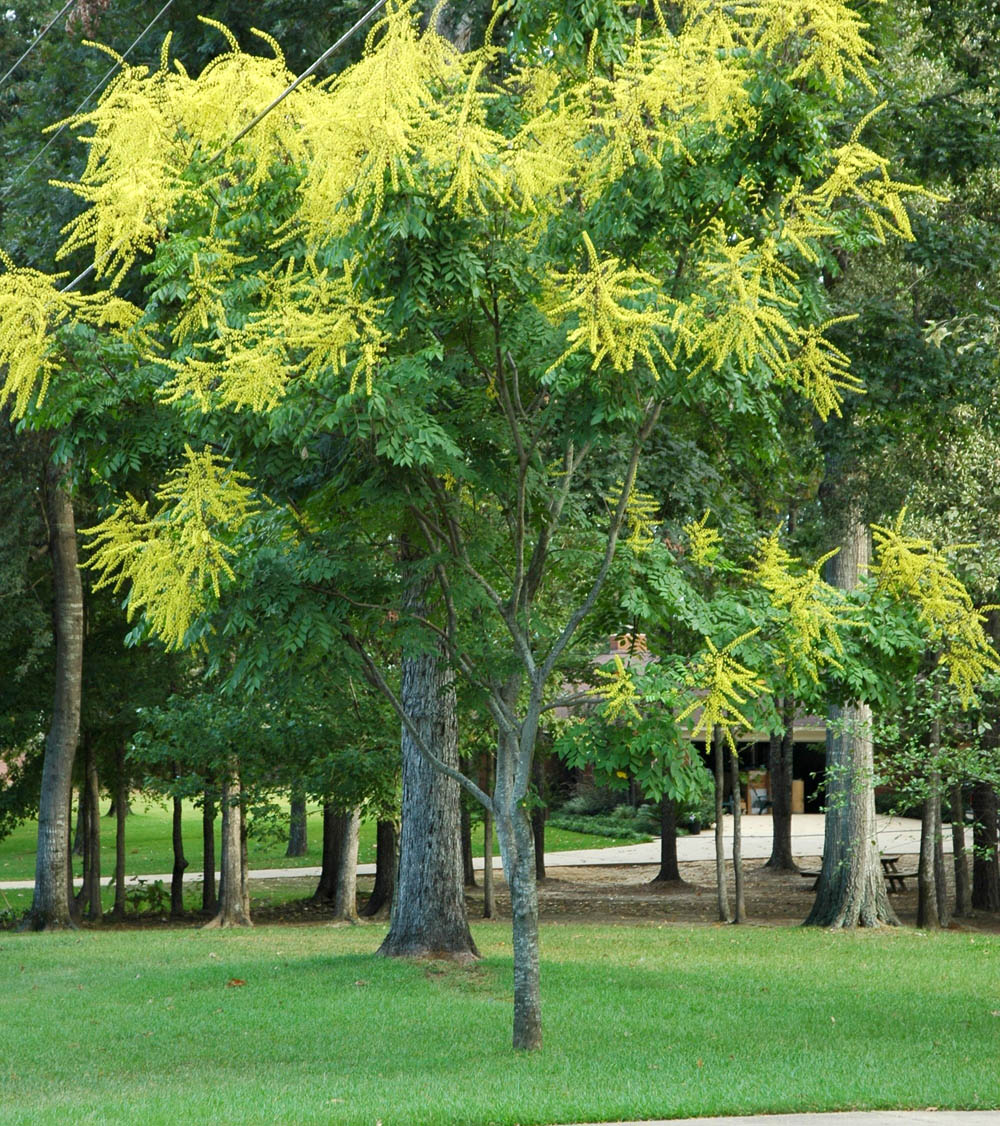
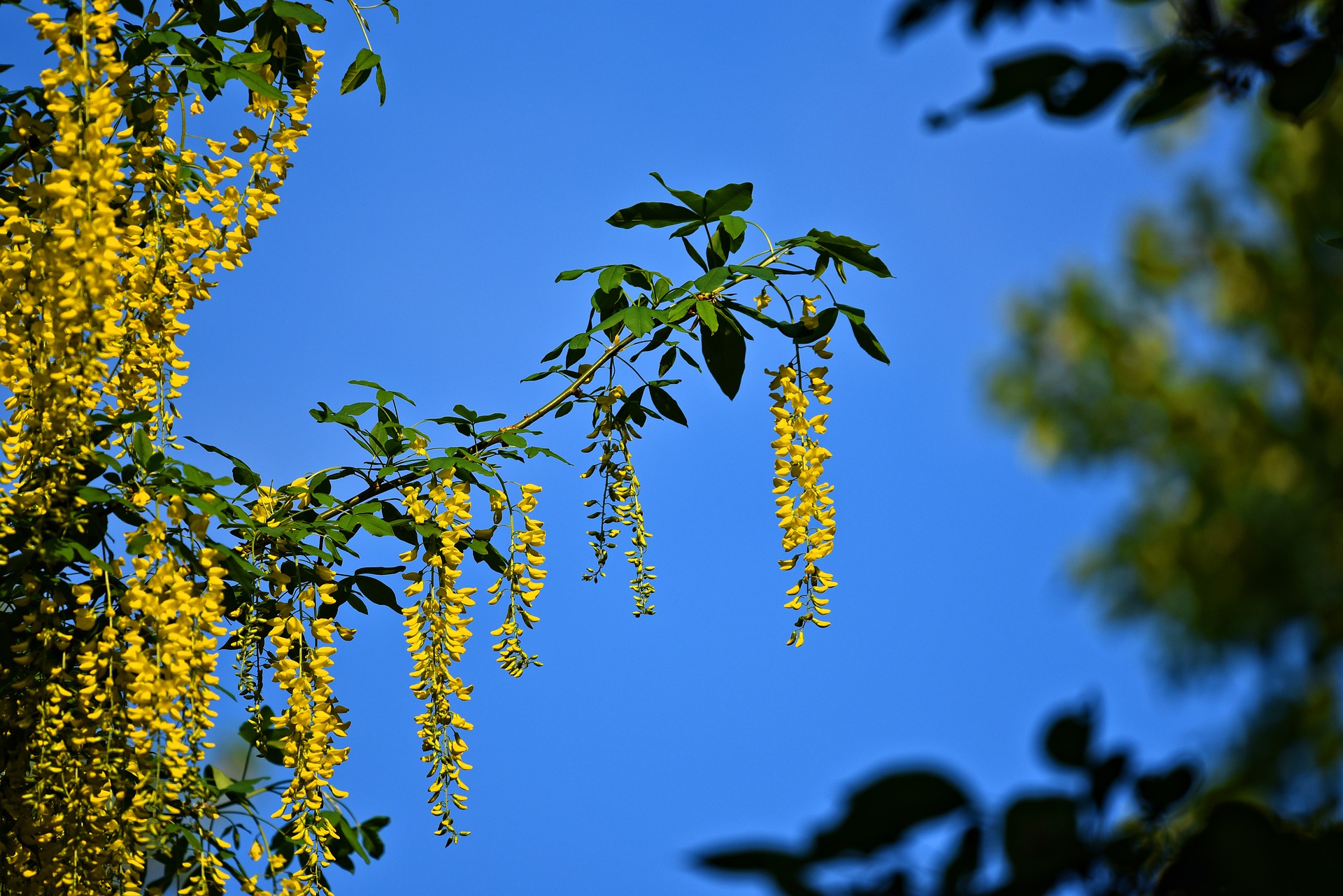
The Golden Rain tree can be found on many cities’ approved urban growing tree lists. They are a very popular urban tree, and you’ve probably got a neighbor with at least one of these.
Bright yellow flowers flair out from 12” long and wide showy panicles, which they begin to produce around 3 to 4 years of age. Their flowing panicles of flowers lend and air of grace and elegance to any landscape. They made this particular list, however, because they are hardy trees, thriving in tough urban environments and in a wide range of soil conditions.
Young trees grow fast and tend to be gangly, but with age and proper pruning they take on a rounded silhouette. Their dense umbrella crown gives excellent shade and shelter, and they can reach a crown height and spread of 30 feet. This is a great addition to any suburban landscape, adding beauty and color to patios, parks, in street dividers, and in planters.
Hardy Rubber Tree
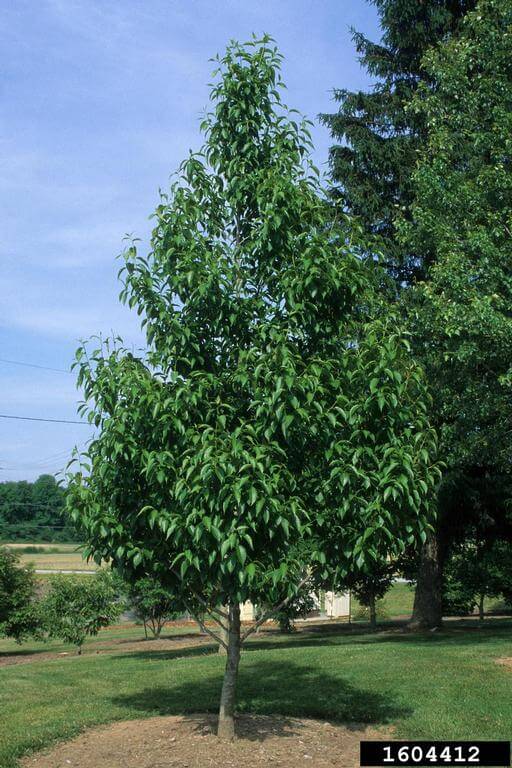
If you want to see green leaves on a tree during a severe drought, this is the tree for you. This little-known deciduous tree has a dense oval to round crown with a low-branched silhouette, making it ideal for a shade or street tree. It is well suited to urban environments, drier regions, and is slow-growing, reaching anywhere from 40 to 60-feet tall.
The thin, three to eight-inch-long, glossy, dark green leaves are extremely resistant to pests and disease. They remain an attractive dark green throughout the summer, changing only to a paler green before dropping in early fall.
The foliage is quite striking and appears to glimmer in the moonlight or when lit from above. Branches ascend forming an upright silhouette in winter. The inconspicuous blooms are followed by the production of small, 1.5-inch-long, flat, winged seeds. Only one or two corrective prunings at an early age normally is all that is needed to develop good structure in the crown.
The Hardy Rubber tree should be grown in full sun on moist soil, but when well-established, it is able to tolerate drought conditions and soil with a high pH. Trees have been growing in parts of North Carolina for many years without irrigation and have survived extreme drought in very poor, clay soil in the full sun.
Hedge Maple

The Hedge Maple is usually low-branched with a rounded form, but there is considerable variability from one tree to the next. The branches are slender and branch profusely, lending a fine texture to the landscape particularly during winter. Lower branches can be removed to create clearance beneath the crown for vehicles and pedestrians.
The tree grows slowly, but may eventually reach a height and spread of 30 to 35 feet. The small stature and vigorous growth make this an excellent street tree for residential areas, or perhaps in downtown urban sites.
However, it grows a little too tall for planting beneath some power lines. It is also suitable as a patio or yard shade tree because it stays small and creates dense shade.
The tree excels in its ability to tolerate dry, alkaline soil but some protection from open winds is helpful. It will do well in a partially shaded location or on the north side of a building. The common name alludes to the plants tolerance of severe pruning, and it will make a dense, tall screen, whether pruned or not. Branches are arranged closely on the trunk and some pruning is usually desirable to create a well-formed tree.
The main ornamental feature is the bright yellow fall color. There appears to be variability in color from one year to the next and from tree to tree. Prune early in the life of the tree to develop several major branches well-spaced along a central trunk. This will improve the durability of the tree compared to trees with many upright and spreading branches originating from one point on the trunk.
‘Evelyn’ may be more vigorous, has an upright branching habit but is cold tolerant only to USDA hardiness zone 6. ‘Compactum’ is dwarf, ‘Postelense’ has golden leaves; ‘Queen Elizabeth’ is more upright-formed than the species and makes a good street tree.
Ivory Silk Japanese Lilac Tree
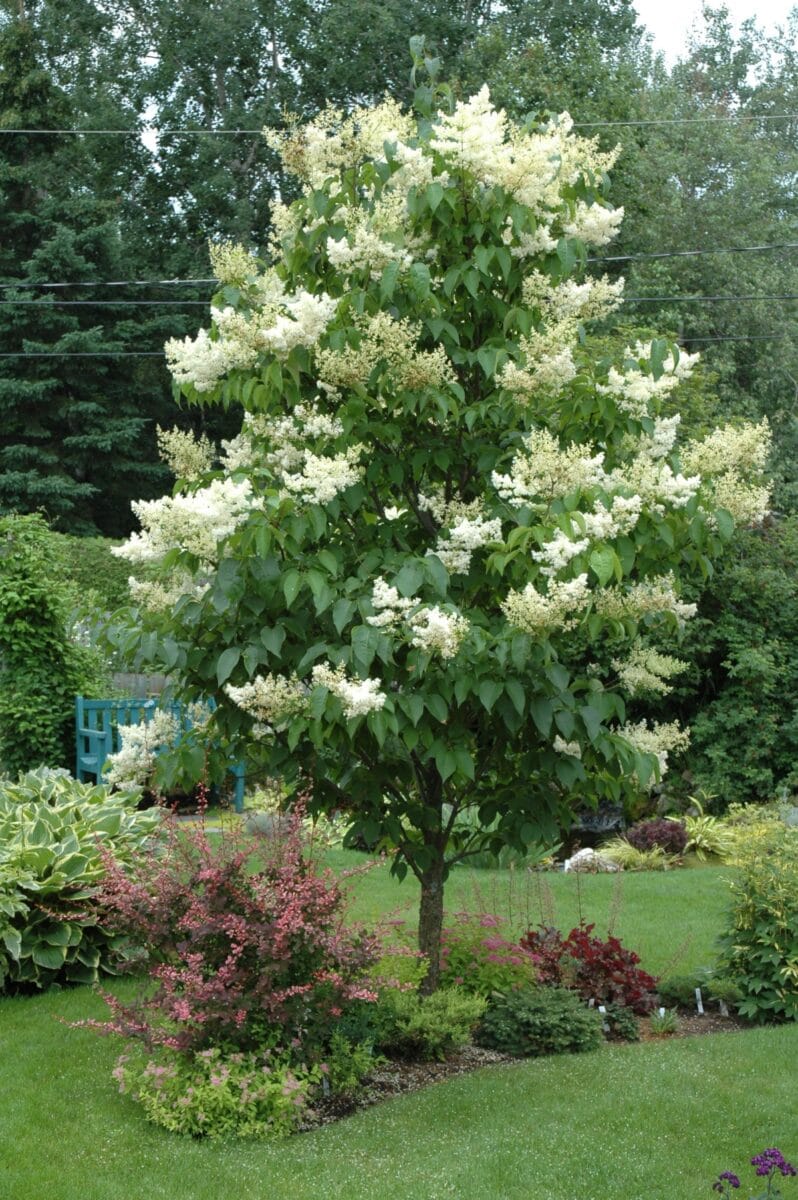
The Ivory Silk Japanese Lilac Tree is being used as a street tree in some parts of the country, particularly in areas with overhead power lines. It is popular as a garden specimen or as an accent in a shrub border because of its showy cream colored blooms.
This is a very large shrub or small tree, reaching a height of about 20 to 30 feet with a 15-foot-spread. The huge clusters of creamy white flowers bloom in early summer for about two weeks. Although they are the main ornamental feature, they lack the fragrance of the spring-blooming Lilacs — this Lilac’s fragrance is more suggestive of Privet.
The tree is sold as a multi-stemmed specimen or as a single-trunked street tree. The trunk is often trained fairly straight to 10 feet and then it branches into a stiff, upright, rounded head of foliage. The bark is somewhat showy with prominent lenticels, being reminiscent of Black Cherry. As with other Lilacs, when the plant is used as a shrub it may need rejuvenation by pruning every few years as it becomes overgrown. It is perhaps the most pest-resistant Lilac, but that does not mean it is pest-free. Regular irrigation during dry spells help make this a pest-resistant tree.
Japanese Tree Lilac is tolerant of urban conditions, growing in poor, clay or alkaline soil. The gorgeous flowers are most showy and prolific when the tree is located in full sun with good drainage. Plants in partial shade can be infected with powdery mildew which can cause some defoliation.
Although a Lilac, this member of the species is quite different in appearance than those familiar relatives. Its upright growth can be symmetrical to irregular. If you want a more consistent growth pattern and more flowers, the cultivars `Ivory Silk’ and `Summer Snow’ are solid options. `Ivory Silk’ grows well only in USDA hardiness zones 3 through six (perhaps into 7) and has an oval or pyramidal form when young but spreads to a rounded shape as it grows older.
Royal Purple Smoke Tree
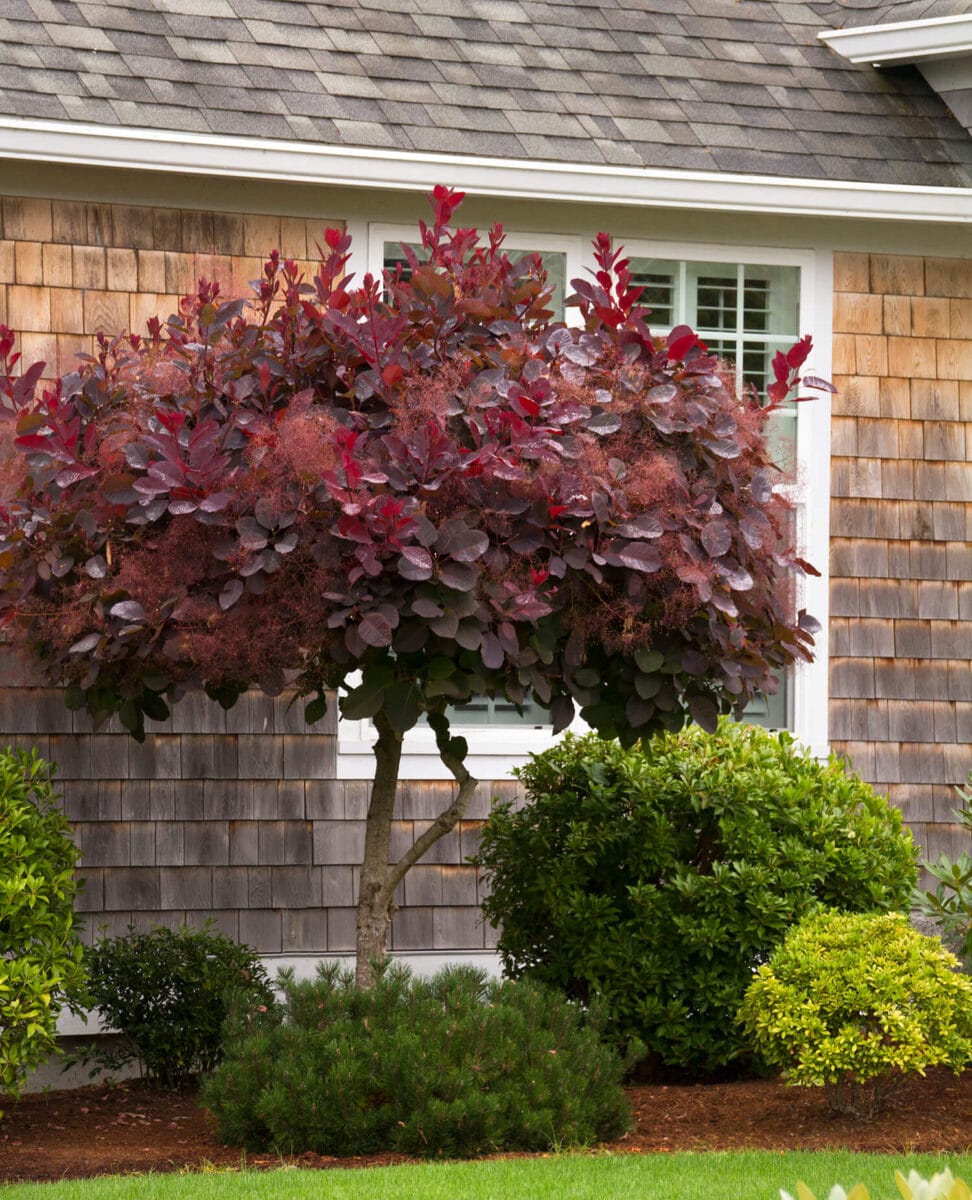
The Royal Purple Smoke tree is tough and adapts to restricted soil spaces. It could be used along a street under power lines and would not require pruning for many years. It is a small tree, well-adapted to urban areas, and provides year-round interest.
This small, open-crown tree eventually reaches to 12 to 15 feet tall (occasionally 20) and 10 to 12 feet wide. The large panicles of wispy dark pink flowers produced in spring and early summer give the effect of a cloud of smoke. Leaves emerge purple and fade to dark green in the summer. They make a wonderful accent in a shrub border and can be planted as a specimen or as a patio tree where the black, showy, multiple trunk can be displayed.
Planting Smoketree is a good way to extend the spring flowering-tree season into the summer before the Crape-Myrtles come into full bloom. Fall color is usually good to excellent and ranges from yellow to orange and brilliant red-purple. Many people grow it simply to enjoy the vivid fall color.
Smoke trees grow best in a sunny location and a well-drained loam. They will grow asymmetrically and lean toward the light in a partially sunny area, so it is best to locate it in full day sun where the crown will develop symmetrically. Though sometimes short-lived in rich soil, Smoke trees are useful in dry, rocky soil where there is no irrigation. It also grows in a wide range of soil pH, including alkaline.
Other varieties to consider: Smokebush and wigtree.
Ruby Red Horse Chestnut
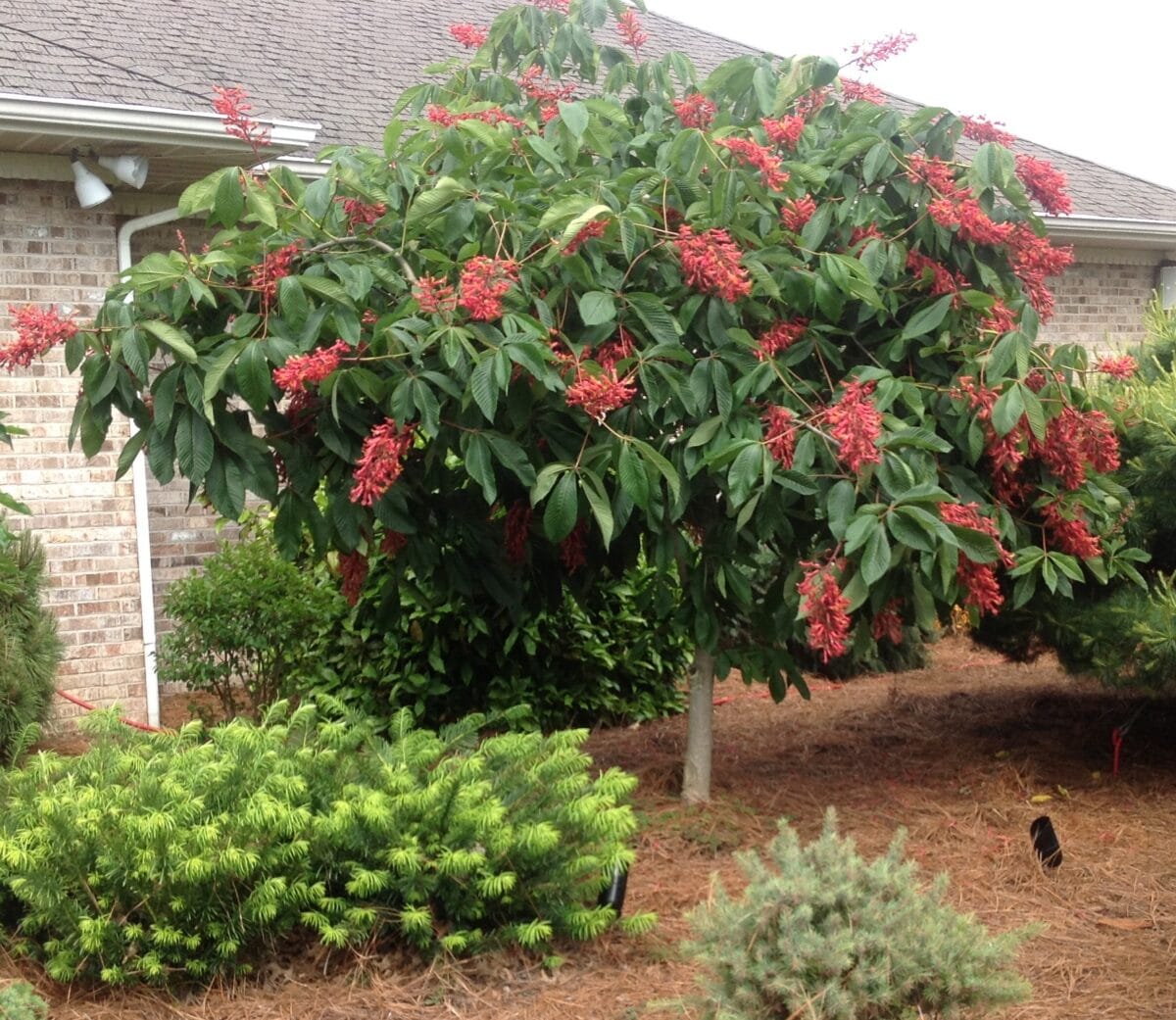
The Red Horse Chestnut tree is quite striking with dark green, coarse-textured foliage. Pyramidal in shape when very young, it develops slowly into a round, dense shade tree by five to seven years of age, and is outstanding in the landscape for its beautiful springtime display of reddish pink blossoms. The multitude of deep scarlet flowers in erect, 10-inch-long panicles at each branch tip are quite attractive to bees and hummingbirds.
This hybrid will ultimately reach a height and spread of 35 to 50 feet but grows slowly. The prickly seedpods (which can be messy on the original hybrid) are nearly absent on this cultivar, making it better suited than the species for planting in an urban area.
Ruby Red Horsechestnut will grow in full sun or light shade and prefers moist, well-drained, acidic soils, but will still grow in slightly alkaline soil. These trees are moderately tolerant to drought, wind, and salt and resist the heat of the south very well. They hold up well in urban areas, even in restricted and compacted soil spaces.
Red Horsechestnut appears to be less susceptible to disease than either of the parents. Trunk bark may crack when exposed to the direct sun so keep it shaded as much as possible by leaving lower branches on the tree and don’t over-prune the tree, exposing the trunk suddenly to direct sun. The tree usually requires little pruning to develop a good form.
The cultivar ‘Rosea’ has pink flowers. ‘O’Neil’s Red’ has double red flowers.
Don’t Plant These Trees Near a Sidewalk
While their root systems and canopies are great in tight, urban spaces, these trees are incredibly messy and will cause countless problems.s
- Holly trees
- Crepe myrtles
- Olive trees
- Privet
- Bottle brush or Callistemon
- Birch trees
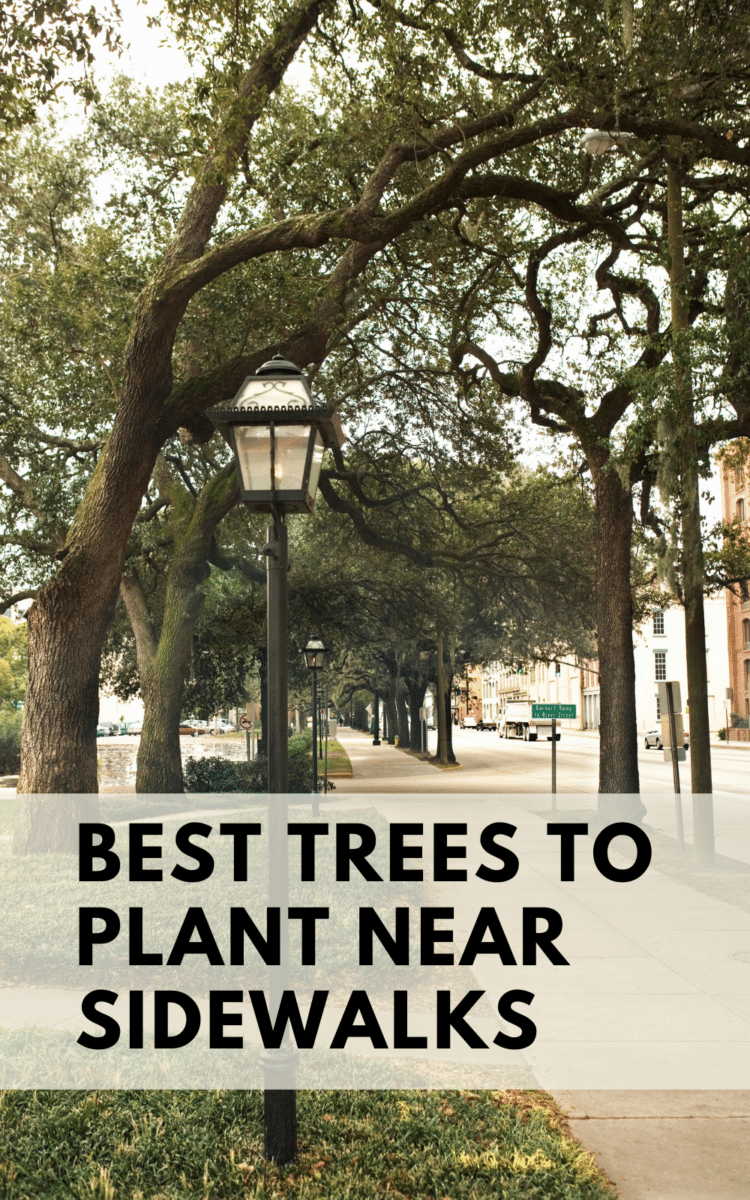
- About the Author
- Latest Posts
I strive to paint vivid landscapes with my words, bringing the magic of far-off lands and enchanting aromas to life for my readers. Combine passion for exploration and the art of gastronomy in an unending ode to the senses. When I’m not traversing the globe, I find solace in the earth beneath my fingertips, tending to my garden and working on projects around my verdant oasis. MK Library serves as a beacon, guiding fellow travelers and homebodies alike to embrace sustainability, nurturing both our planet and our souls with purpose. Full Bio.



